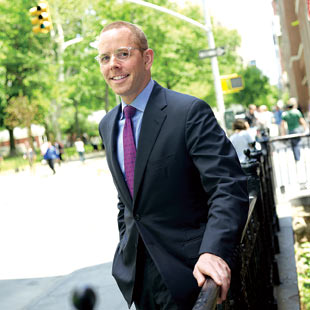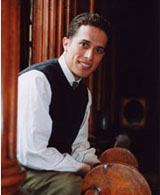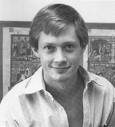We are getting mail in droves. We aren’t getting holiday cards, we’re getting catalogues, by the dozens. The people who lived here before us were certainly eclectic-Parts-Unlimited Snowmobile Catalogue, Orvis, and my recent study: the seemingly innocuous J.Crew glossies.
It didn’t take a very long or discriminating glance through a few catalogues to notice something strange is going on with J. Crew. Something smells one-sided to me in their advertisements-and it’s not the Europhile merch they are pushing. It’s the fact that the catalogue is working hard to humanize their male models and is therefore glaringly objectifying their women models by that light.
Now, I know catalogues are only picture advertisements, not literature; and models are only models, not meant to be real people, but idealized concepts of human form and beauty. But, something is awry. Why has recent J. Crew marketing chosen to give real life “voice” to their male models, who aren’t models at all, but local production designers, or Brooklyn artists. And why are their female models still just quiet and cute, silent representations of our best awkward, adolescent female selves?
A quick look at their website supports this male/female model discrepancy too. The intro page of the Women’s shop is a pretty, red-lipped waif (stepping off her soap box!) in a belted “puffer” coat. The advertisement snippet: “It beats the cold (and looks good doing it!-next page, the “Boyfriend Fatigue Jacket”) That’s it.
The intro web page of the Men’s shop is a striking picture of twins, Dexter and Byron Pearts. It is the introduction to a life story. Both Pearts are designers for the company who have been recurring characters in the last two catalogues. In big red letters behind them, “Family Guys” appears, asking us to click and read on about what “holiday tradition” these handsome and talented designers “most looked forward to.”
Click on the red, “See what they said” and the online and catalogue reader is charmingly introduced to four more handsome men and their pulled quotations about holiday traditions. Each man is ostensibly a J. Crew employee-outside of the modeling department. They’ve been brought in to model-just this once-because they are attractive and interesting. They represent how every person wants to see him or herself. They are portrayed as dynamic humans who happen to be wearing J. Crew clothing.
Furthermore, each man is seen with the accompaniment of someone “near or dear” to them. Two models, Pedro Gomez and Christopher Brooks, are with their equally handsome children. Christopher has his wife with him in too, and the family sits around him Cosby Show style. And one other model, Mark Welsh, is accompanied by his dog, Agnes. Spencer Lyons, a J. Crew creative director made it to the shoot too. His sister and father were lucky enough to be suited up to join him. Wait a minute, I know the names of every male in this catalogue! Who are these people? And why do they get names and pulled quotes, and the women models get none?
Don’t get me wrong, I am not dying to read the personal lives or favorite holiday traditions of catalogue models. I may be interested in storytelling and the things pretty people say, but a grocery line skim through US weekly can satisfy me for months. It just seems to me that this compelling marketing scheme by J. Crew is glaringly one-sided, and one that still ‘objectifies’ women models as nameless nymphs flitting about arm in arm, from party to party (many of the pages market the women’s clothes as the “Friday” coat, or “ready to party!”) and that is it. While their male models are not just made models: they are creative directors, husbands, pet owners and dads too-and we know what they think about. Pedro Gomez philosophizes on page 114, “Giving and getting are opposite sides of the same coin.” What gives?
In spite of our economic (dep)recession, J. Crew has had the golden touch, ever since they outfitted Michele Obama. In May, Time Magazine reported, ‘no retailer owes more to the First Lady than J. Crew. In October, amid the Sarah Palin $150,000 wardrobe scandal, Obama wore a $340 J. Crew set on the Tonight Show. "Ladies, we know J. Crew," she said to the studio audience. J. Crew's Web traffic shot up 64% the next day, and the yellow blouse, cardigan and skirt she wore on the show sold out immediately. Later she wore a J. Crew camisole, cardigan and pencil skirt in the March 2009 issue of Vogue. A hefty wait-list immediately started for all three fall items.” The Obama girls have also been seem wearing J.Crew-cuts, outfits for little people. What does that mean? Did they figure they have Michele Obama speaking for them to all women customers, and stop there? The market would suggest this. But if I know J. Crew, I know from their catalogues that male and female customers are marketed differently, and therefore valued differently.
In March of last year, The New York Times reported on Dexler, the CEO of J. Crew, and they applauded him as a bold leader who ‘wants to get to know his customers. “ At J.Crew he’s (Drexler) intent on doing what he does best — visiting stores every day; reading, responding and acting on customers’ emails; and asking customers for input. He told Nocera (reporter):
“People want to be listened to and they want to be respected. Besides this is how you learn what is on their minds. What can be more important than that?”
Maybe he’s only talking to his male customers, because his female models, we are told, have nothing on their mind. And are they respected?
How can we ever know what is on the minds of the pretty young thing on page 29 in this week’s Holiday Catalogue? She’s got her Metropolitan Suede Ankle Boots on -one of them is hiked atop of a TV that is playing a video of a yule log burning. Her hands are in her pocket, she looks defiant. She isn’t saying “Holidays are an over commercialized joke--on you! Ha! Ha!” or even, “ I am killing my TV!”
The catalogue's only quotation on that page is, “Send warm wishes-shop out coat collection at JCREW.COM.” Maybe what she is saying is, “Shop!”
Fair or not, if you want conversation, and “real-life-J.Crew-wearing people,” skip ahead to page 114 where the men are. Ladies, we know J. Crew!





